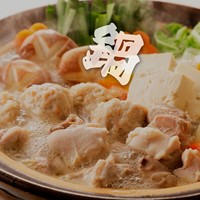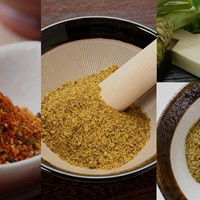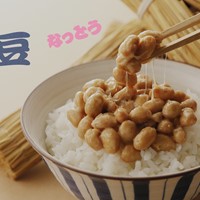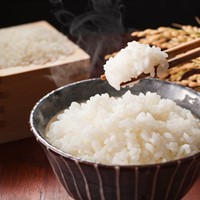20 Popular Japanese Seasonings, Sauces, and Condiments

This page contains affiliate links.
Are you curious about the secrets behind the mouth-watering flavors of Japanese cuisine? While freshness and natural ingredients are at the heart of Japanese cooking, various seasonings, sauces, and condiments are also used to enhance and adjust the taste. From the sa-shi-su-se-so philosophy to the wide range of seasonings, Japanese cuisine is a world of its own. Join us as we explore some of the most famous sauces and condiments that will elevate your Japanese cooking to the next level.
The 5 Main Japanese Seasonings

While there is now a wide range of different Japanese seasonings, the core of Japanese cuisine comes down to a simple philosophy – sa, shi, su, se, so. This is a set of consecutive characters in the Japanese hiragana/katakana alphabet and is used as an acronym for the core seasonings in Japanese cooking. Each character stands for one of the pillars of seasoning.
Sa, Shi, Su, Se, So
Sugar (Sa): Sugar, or satou in Japanese, is a crucial ingredient in many cuisines, including Japanese. It is commonly used in desserts and sauces to enhance flavor.
Salt (Shi): 'Shi' stands for salt or shio, essential for maintaining and enhancing the taste of various dishes. Japan has a range of salt styles used in different ways to achieve various effects.
Rice Vinegar (Su): 'Su' refers to a refreshing vinegar made through rice wine fermentation. It can be used as a dressing for salads, soups, sauces, and more.
Soy Sauce (Se): The fourth key ingredient is soy sauce, now known as shoyu but was once spelled seuyu. Soy sauce is used as an ingredient, sauce, or side dipping sauce for various dishes.
Miso (So): The final character, 'so,' represents miso, an inherently Japanese flavor. Miso is used in various ways throughout Japanese cooking, including as a side dish of miso soup, mixed into broths and soups, and as a glaze for grilled meats.
Other Essential Japanese Seasonings
Japanese cuisine is renowned for its complex flavors and unique seasoning blends. In addition to the five essential seasonings, Japanese cooking relies heavily on other basic seasonings and sauces. These ingredients are used in countless dishes and are integral to creating Japanese cuisine's signature tastes and aromas.
Ponzu (Citrus Sauce)
Ponzu is a light and refreshing sauce with a strong citrus flavor and a hint of umami, thanks to adding soy sauce. It is a famous dipping sauce for meals like shabu-shabu and a great addition to salad dressings or noodle dishes. It is popular during the summer months for its refreshing citrus taste.
Mirin (Rice Wine)
Mirin, a type of rice wine, is often used in Japanese cuisine as a sweetening agent. Though it is not considered one of the five essential seasonings, it is used in almost every sauce variation, broth, soup, marinade, and other dishes.
Men Tsuyu (Tsuyu no Moto)
Men tsuyu is a simple condiment made from four ingredients: dashi, soy sauce, mirin, and sugar. You can use it as a base for broths and soups and add it to umami dishes. Sometimes, it is used as a dipping sauce for cold noodle dishes.
Dashi (Soup Stock)
Dashi is a ubiquitous soup stock in almost every Japanese soup or broth. It provides a comforting, warm feeling of umami without a heavy texture. Dashi is an essential ingredient in several sauce recipes. It can be made at home with many other core Japanese ingredients, such as kombu seaweed and bonito flakes, or bought in various forms from a store.
Japanese Sauces & Condiments

While the previous seasonings are considered the backbone of Japanese cuisine, adding sauces and condiments can make your dishes more diverse and flavorful, incorporating a range of Japanese tastes into your cooking.
8 Japanese Spices and Seasonings to Add to Your Grocery List >>
Tonkatsu Sauce
Tonkatsu sauce, a thick brown sauce, is the perfect partner for fried dishes like tonkatsu, chicken katsu, kushikatsu, and more. It's based on Western Worcestershire sauce but with a Japanese twist, featuring a blend of soy sauce, ketchup, and sugar. With its unique flavor, it's no surprise that tonkatsu sauce is a critical ingredient in modern Japanese cuisine.
Okonomiyaki Sauce (Otafuku Sauce)
Similar to tonkatsu sauce, okonomiyaki sauce is thicker and stickier, often compared to barbeque sauce in flavor. It's commonly used as a topping for okonomiyaki, a Western Japanese dish, but it is also added to takoyaki or other similar foods. This sauce will surely add a sticky and sweet flavor to your cooking.
Tabasco
Although Tabasco is a well-known hot sauce worldwide, it's gaining popularity in Japan, mainly when used with Western cuisines like pizza, pasta, and Western-inspired Okinawan taco rice. A few drops of this fiery sauce can add a kick of flavor to your meals.
Yakiniku Sauce
Yakiniku sauce is a must-have for Japanese grilled beef or yakiniku. It can be used as a dipping sauce or as a glaze for cooking meat, adding a solid umami flavor from a combination of miso, bonito, mirin, and sugar. This sauce is perfect for elevating the taste of your grilled meat.
Oyster Sauce
Oyster sauce may be more commonly associated with Chinese cooking, but it's also present in many Japanese dishes. It's a rich and robust sauce made mainly with oyster extract, soy sauce, and brine, providing a salty and umami flavor to your meal.
Wasabi
Wasabi, a grated or crushed Japanese horseradish, is famous worldwide as a condiment for sushi and sashimi, adding a punch of spicy flavor to fresh fish.
Japanese Mayonnaise
Japanese mayonnaise differs significantly from its Western counterpart, adding rice vinegar and dashi broth, making it tangier and sweeter with more umami. It's perfect for salads, dipping sauces, okonomiyaki, or takoyaki toppings or as an ingredient in various other condiments.
Curry Powder
Japanese curry powder is a mixture of aromatic spices and herbs, adding a distinctive flavor to curry dishes like curry bread, rice, and curry udon. It's a versatile ingredient that can enhance the taste of any recipe that requires a Japanese curry flavor.
Shichimi Togarashi (Seven Spice Blend)
One of Japan's most popular spice blends is shichimi togarashi or Seven Spice Blend. As the name suggests, it blends seven different spices, including chili, roasted orange peel, ginger, seaweed flakes, sesame, and poppy seeds. This blend is used in various dishes, such as soups, noodles, and onigiri. It's the perfect way to add a touch of Japanese spice to any recipe you're cooking up.
Furikake
Furikake is a seasoning designed as a flavorful sprinkle on top of other food, but it's most popular on rice. While it can be used as an ingredient in cooking, its primary purpose is as a topping. It usually consists of a range of spices and flavors, including bonito, dried seaweed flakes, sesame seeds, and salt. Sprinkle it on your rice for a flavorful and delicious meal.
Bonito Flakes (Katsuobushi)
Bonito flakes, or katsuobushi, are thin, shaved bits of fermented tuna. They have a strong umami flavor and are a great addition to various dishes. Bonito is often used to make dashi, a key ingredient in Japanese cooking. It's also commonly used as a dressing for salads, noodles, okonomiyaki, and takoyaki, among other dishes.
Elevating Your Japanese Cuisine
Sauces, condiments, and seasonings play a crucial role in Japanese cooking. They bring unique flavors and enhance the taste of dishes, making them more delicious and enjoyable. Whether you're a resident of Japan or a visitor looking to pick up some authentic ingredients, this guide has got you covered. From shichimi togarashi to bonito flakes, these seasonings will help you elevate your Japanese cuisine to the next level.
For more information on Japanese foods and cuisine, check out our blog for a wealth of information.
















